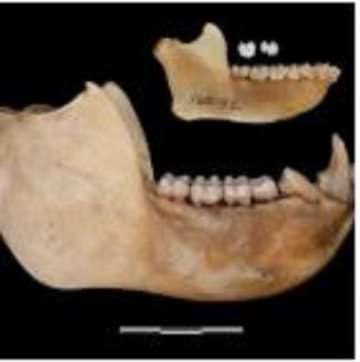Researchers have discovered the fossil of a tiny monkey species, about the size of a cottontail rabbit, that lived in Kenya about 4.2 million years ago.
Nanopithecus browni was the same size as a modern talapoin monkey, the smallest living Old World monkey species that weighs only two to three pounds, said researchers from the National Museums of Kenya and the University of Arkansas in the US.
"Old World" is used commonly in the West to refer to Africa, Asia and Europe.
Talapoins are part of a large group of monkeys called guenons, which are commonplace and widespread across Africa today.
Most species are several times larger in size than Nanopithecus browni, according to the study published in the Journal of Human Evolution.
Guenon evolution is poorly understood but thought to be driven by changes in forest habitats, with the distribution of modern species reflecting the breakup and re-convergence of ancient forests.
Talapoins live only in West Central Africa, are confined to tropical forests, and are thought to be dwarfed from a larger ancestor in response to life in woody, swampy habitats.
Nanopithecus browni was found in Kenya on the eastern side of the continent, at a site called Kanapoi, researchers said.
The Kanapoi habitat was dry and covered with grasslands and open forests -- a very different place from the tropical forests of Cameroon and Gabon in West Central Africa.
It is also at Kanapoi where remains of some of the earliest human ancestors, Australopithecus anamensis, have been found and would have lived alongside Nanopithecus browni, researchers said.
Nanopithecus browni is the second oldest guenon found so far, just younger than the guenon single tooth found 10 years ago on the Arabian Peninsula, they said.
The ancient date, combined with a habitat so different and so far away from that of modern talapoins, reveals a much more complex evolution of guenon monkeys than previously thought.
This new enigmatic member of the primate family reveals that dwarfing occurred far longer ago than scientists suspected and may have happened more than once, and in very different habitats perhaps for different reasons.
The fossil is housed at the National Museums of Kenya, researchers said.
Also Read | Chinese fossil sheds light on mysterious Neanderthal kin
Also Read | Scientists discover 11 million-year-old human ancestor fossil in Kutch
Latest World News

